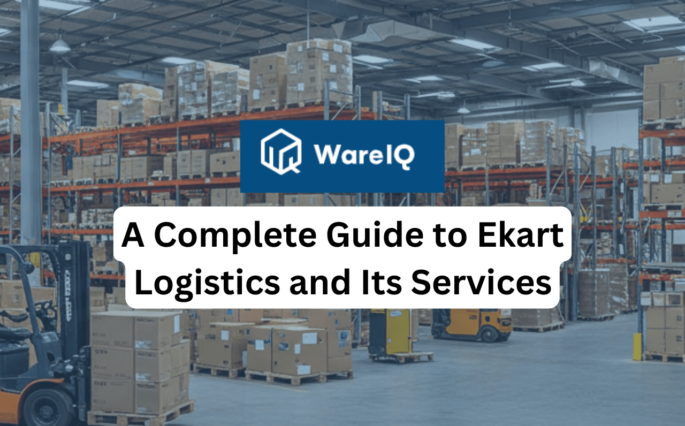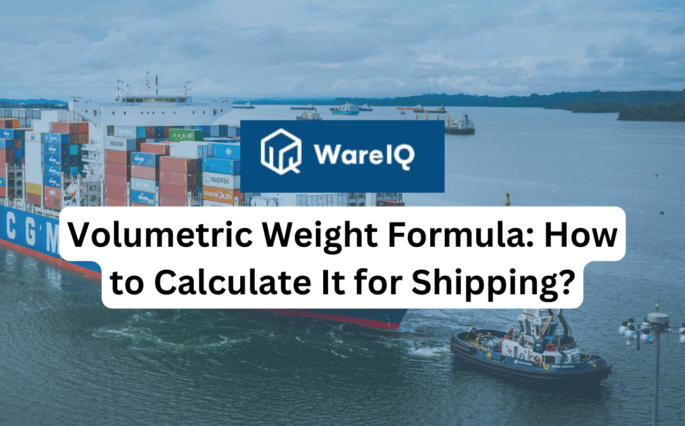Mastering Supply and Demand: A Guide to Effective Inventory Optimization


Business circles have heard about inventory optimisation, but they have difficulty finding a solution to the numerous supply chain issues they might have in their company. Inventory is a collection of goods that an organization keeps for later use. The inventory optimization system analyzes and manages the same. Inventory can be stored at different points along the production and distribution supply chain. When low items need to be replenished, the inventory optimization system helps determine the amount of each item to be hoarded and the number of items that need to be ordered or manufactured when replenishment is necessary.
Inventory optimization application improves inventory control and management across a broader supply network by integrating the most recent technologies and methods. Inventory optimization design goals include improving customer service, reducing lead times and costs, and meeting market demand. Raw materials, work-in-process inventories, and usually final products’ storage policies and procedures are all covered by inventory optimization.
Effective supply chain management reduces costs and lead times, improves customer demand adaptation, and leads to optimal inventory. Inventory optimization and supply chain managers’ main concern is to calculate the exact amount of inventory at every point in the supply chain without creating overstock or shortages in order to minimize the total supply chain cost. Because a shortage of inventory yields losses in sales, while an excess of inventory may lead to useless storage costs, it is critical to make an exact estimation of optimal inventory.
How to Optimize Inventory
The operating cycle of a business determines the optimization of its investment in working capital. It calculates the amount of time that has passed between the investment of cash and the realization of the investment out of sales revenue. The period during which investments of one unit of money remain locked in the normal course of operations until revenue is recovered is known as the operating cycle. Each project’s operating cycle is different.
The operating cycle of the cost element in a typical small-scale industry starts with the purchase of materials. The contents are not consumed right away. ‘Raw Materials Conversion Period’ is the next step in the cycle. When materials are sent for production, there is another time interval between sending the materials and making the finished product. This interval of time is referred to as the ‘Work-in-Progress Conversion Period’. The company anticipates demand and produces finished goods. The finished product would remain in the store until the demand for it is fulfilled.
Competition and other factors cause the company to offer credit facilities to its customers. “Book Debts Conversion Period” is the period of time between sale and cash acquisition. When the company buys raw materials from suppliers, it gets the credit. This time frame, which is referred to as the “Payment Deferral Period”, shortens the operating cycle.
Inventory Optimization Management Techniques
Inventory management primary challenge is to balance operating efficiency, investment costs, and other costs associated with large inventories. The goal is to reduce the basic conflicts while optimizing inventory holding. When it comes to making decisions about which item to manufacture and when to keep inventories in balance, a lot of different techniques are needed, from simple graphical methods to more advanced and complex quantitative techniques. Many of these techniques use mathematics and statistical ideas and instruments, along with various control theories from engineering and other fields. They are mainly focused on helping with better policy compliance and decision-making.
Effective inventory optimization management requires an understanding of the nature of inventories. To achieve this, the following analysis and classification methods are available.
| Technique | Basis | Main Use |
| ABC (Always better Control) | Value of Conception | To control raw materials, components and work-in-progress inventories in the normal course of business mainly to control purchases |
| HML (High, Medium, Low) | The unit price of the material | Mainly to control purchases |
| XYZ | Value of the items in storage | To review the inventories and their uses at scheduled intervals |
| VED(Vital, Essential, Desirable) | Criticality of the component | To determine the stocking levels of spare parts |
| FSN(Fast-moving, Slow moving, Not-moving) | Consumption patterns of the component | To control obsolescence |
| SDE(Scarce, Difficult, Easy to obtain) | Problems faced in procurement | Lead time analysis and purchasing strategies |
| GOLF(Government, Ordinary, Local, Foreign sources) | Source of the material | Procurement strategies |
| SOS(Seasonal, Off-Season) | Nature of supplies | Procurement/holding strategies for seasonal items like agricultural products. |
Continuous Improvement and KPI Monitoring
Based on the organization structure, each objective is divided into several sub-objectives, and these sub-objectives are then further divided into KPIs for each department. Surprisingly, even though the KPIs are established to achieve the same overall objective, they frequently conflict with each other. Thus, some departments report failures when they meet their KPIs. Each department’s organizational structure and functions must be changed so that their KPIs are synchronized in order to resolve the KPI conflicts. To achieve KPIs, the information system design should support departments’ activities.
Department-wise old KPIs
- Production Department– Operating rate, production efficiency, and production cost are the KPIs for the production department. Continuous production reduces idle time and increases operating rates. Thus, a higher operating rate frequently leads to overstocking. Bigger lot sizes and continuous production reduce setup and changeover costs. But it makes it harder for the production department to adapt to demand changes. As a result, it hurts the KPIs for Logistics (excess inventory) or Sales (lost sales opportunity).
- Sales Department- The sales department’s KPI is its sales figure. Sales teams usually make sales plans that meet demand. There are two main reasons. Their desire to increase sales is first shown by an ambitious plan. Secondly, they include “safety stock” in their sales plan to prevent sales opportunities from being lost. As a result, the company has a tendency to overstock. Additionally, the sales team tends to concentrate on products that sell quickly because the KPI is an overall sales figure rather than a single product sale. As a result, these products’ sales exceed the planned target, resulting in stock-out. At the same time, slow-moving product sales fall short of the target, which leads to excess inventory optimization. When stock-outs occur, the production department must adjust its production and purchase plans to increase production, which leads to higher production costs. Overstocking increases storage costs.
- Logistics Department- The company’s logistics department is in charge of its product distribution system, which includes warehouse management and transportation. On-time delivery rate, transportation costs, and storage costs are the KPIs of the department. These individual KPIs are in conflict. Regular deliveries of smaller amounts will increase the on-time delivery rate. Also, the logistics team maintains high inventory optimization levels so that the goods can be shipped quickly। This causes overstock.
Restructuring
On-time delivery rate, transportation costs, and storage costs are the KPIs of the department. These individual KPIs are in conflict. Regular deliveries of smaller amounts will increase the on-time delivery rate. Also, the logistics team maintains pipeline inventory management optimization levels so that the goods can be shipped quickly. This causes overstock.
Department-Wise New KPIs
Production Department- Production cost is now the most important production KPI, followed by plan achievement rate. After reorganization, SCM centrally controls the supply chain. Thus, the most important function of production is executing and achieving the production plan that has been prepared by SCM.
Sales Department- The company’s sales figures are still the KPI for Sales. It is, however, the sum of all the individual products’ sales, not just one total figure.
Logistics Department- The KPI for achieving the on-time delivery rate was also transferred to SCM from Logistics because the distribution planning function was transferred to it. The distribution plan achievement rate, transportation costs, and storage costs are the new KPIs for logistics.
Conclusion
Business circles have heard about inventory optimisation, but they have difficulty finding a solution to the numerous supply chain issues they might have in their company. Inventory optimization application improves inventory management strategies across a broader supply network by integrating the most recent technologies and methods. Inventory optimization design goals include improving customer service, reducing lead times and costs, and meeting market demand.







